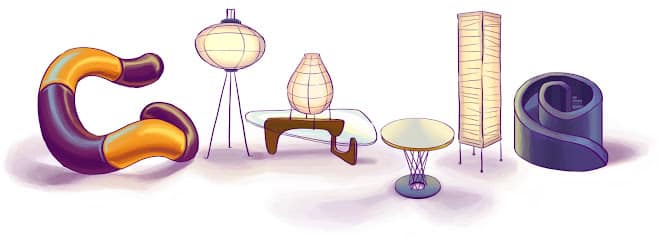Isamu Noguchi (November 17, 1904 – December 30, 1988) was a visionary artist, designer, and landscape architect who left an indelible mark on the world of art.
Life and Career
Born on November 17, 1904, in Los Angeles, California, Noguchi’s innovative creations continue to captivate audiences, and his legacy as a pioneer is celebrated internationally. Noguchi’s artistic journey began at an early age. His mother, Leonie Gilmour, an American writer, and his father, Yonejiro Noguchi, a Japanese poet, laid the foundation for his diverse cultural heritage. With influences from both East and West, Noguchi developed a unique perspective that would shape his groundbreaking work. Noguchi’s thirst for knowledge led him to study pre-med at Columbia University, New York. However, his true calling lay in the world of art, compelling him to pursue sculpting under the tutelage of renowned sculptor Constantin Brâncuși in Paris. This experience served as a catalyst for Noguchi’s artistic development, pushing boundaries and challenging traditional norms in pursuit of his creative vision.
One of Noguchi’s greatest contributions to the art world was his ability to amalgamate influences from both Eastern and Western cultures. Drawing inspiration from Japanese aesthetics, he embraced organic forms and minimalism while simultaneously integrating Western techniques and materials. This fusion gave birth to an entirely new artistic language that he would employ throughout his career.
Noguchi’s artistic prowess manifested in various forms. His sculptures were a testament to his ability to breathe life into stone, wood, and metal, transforming them into captivating masterpieces. One of his most renowned sculptures, “Red Cube,” flawlessly showcases his fusion of Eastern and Western influences. This iconic installation, located in Lower Manhattan, is a symbol of contemporary art’s power to engage and provoke thought. Noguchi’s creative genius extended beyond sculpture and into the realm of landscape architecture. He redesigned public spaces, integrating nature and sculpture seamlessly. Notable examples include the UNESCO headquarters garden in Paris and the Billy Rose Sculpture Garden at the Israel Museum. Through his designs, Noguchi succeeded in blurring the lines between art and nature, creating harmonious environments that invite contemplation and reflection.
Legacy and Awards
Isamu Noguchi’s impact on the art world cannot be overstated. His relentless pursuit of innovation and his ability to redefine artistic boundaries continue to inspire countless artists and designers. Noguchi’s contributions have earned him numerous accolades, including the National Medal of Arts, presented to him by President Ronald Reagan in 1987. Furthermore, his legacy lives on in the Isamu Noguchi Foundation and Garden Museum, established in 1985 to showcase his extraordinary body of work and ensure its preservation for future generations.
Noguchi’s dedication to merging different artistic traditions and blurring the lines between art and design has transcended time. Aspiring artists, sculptors, and architects draw inspiration from his versatile and boundary-pushing career. His ability to seamlessly blend Eastern and Western influences serves as a timeless reminder that art knows no bounds.
Isamu Noguchi’s artistry and innovative vision continue to captivate and inspire audiences worldwide. His unique ability to bridge cultures, materials, and forms has left an indelible mark on the art world. Noguchi’s sculptures, installations, and landscape designs serve as tokens of his creative genius and as beacons of artistic exploration. His legacy as a pioneer and his relentless pursuit of artistic excellence make Isamu Noguchi an enduring figure in the annals of art history.
On 17 November 2009, a Google Doodle was created to celebrate Isamu Noguchi’s Birthday.

